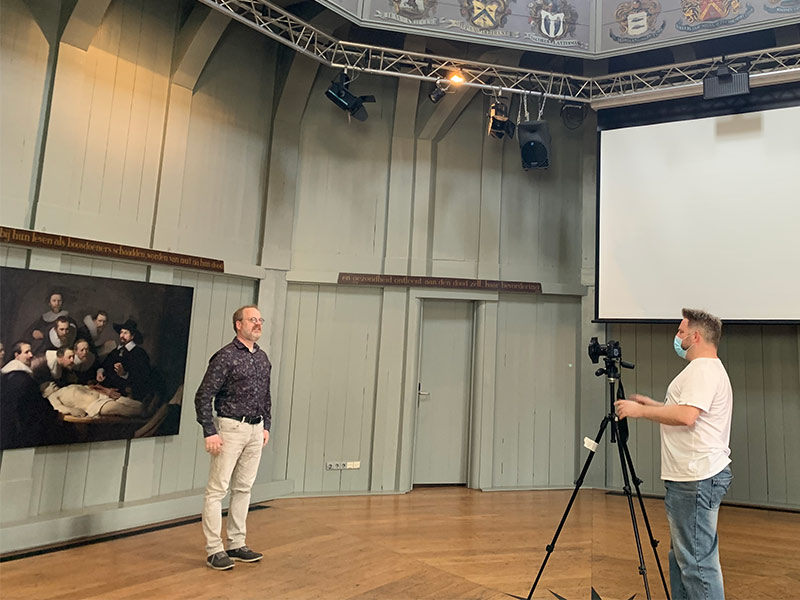
The first question is: what machine to build?
The first hours were spent on coming up with ideas, refining them and assessing their feasibility.
All in the spirit of "yes, and..." building on ideas. A general theme of "it should be fun and not necessarily useful" emerged.
Shooting from the hip:
After the wild ideas, the most promising were discussed in more detail.
This machine is about making a machine with Henks' appearance (our tutor at the lab) which pats you on the shoulder for work motivation in those stress times everyone has in the FabAcademy.
Pros:We finally decided for the shoulder patting machine.


A number of different constructions and materials were evaluated. The main constraint is the weight of the arm.
We looked at lamp constructions to see if these could be useful for the arm.
We selected PVC pipes with 32mm diameter as the "bones". These are stiff, not too heavy and strong.
The shape of the arm and muscles will be made by cardboard disks. This will give a very airy and light structure.
Paper mache was also an option, but was heavier and gave less freedom to tweak things during the project.
The hand that will pat will pivot around the elbow. This allows a fixed and sturdy shoulder that can hold the motors.
The elbow joint will be operated using a stepper motor and a toothed belt.
THe wrist joint will be operated using a servo motor and a wire. The wire will operate in one direction. The joint will be pulled to its original position using a spring or gravity.
The hand will also be made from cardboard. We looked into molding it with silicone, but that would quickly become too heavy.
The detection of the shoulder will be done with a micro-switch. This is a very simple, efficient and precise way to detect the exact position. Ultrasonic sensors, TOV sensors or radar sensors are to inaccurate at the short distances we have between the hand and the shoulder of the subject. The micro-switch will be placed in the hand or the wrist.
For speed and convenience Phil offered to edit the video we need to produce for the group assignment due to his professional background. The others offered to contribute their (un)professional skills and enthusiasm as actors in the production.
To maximize time efficiency, and prepare as much as he could before the only time we can get together to film, he used the following workflow. Leaving as little as possible to do the night before the Global presentations.
The concept was to replicate a 1980’s American 2nd hand car sales / Shopping channel advert. With Bad acting (set the bar high for us), bad filming, bad visuals, bad framing, jump cuts, old effects. So bad it’s good!
The story board was created with a free web-based app called Storyboarder. It was the first time Phil used it and with a bit of experimenting came up with a rough visualization of the script. The great thing about this way of working is that different types of shots and ideas could be tried, including ready made characters who didn’t need any drawing skills to create.
The speech was generated on a free website that converted text to speech in an .mp3 format, as we as a group lacked the ability to get even close to an American 2nd hand car salesman’s voice. To customize the interpretation of the voice, it is possible to use Amazon SSML Tags for Amazon Polly. ttsmp3.com - Input limit: 3,000 characters free per day.
So all the elements were created sufficiently badly enough to fit the style of the video and placed in an edit. Audio, graphics and special effects etc, were been organised so that all that needs to happen is swapping the real footage for the placer images from the animatic.

Filming was done as late as possible due to the machine taking time to get finished. All the preparation helped it go smoothly and none of my stars wanted to hog the limelight ;). I think it was a nice little bit of relief for them from the stress of working on the machine as they enjoyed it very much.
We were filming and replacing the real footage for the prepared up until the last minute before the regional meeting. In the tests on preparing a workflow for this edit, the estimation for rendering all the edit and effects was about 90 minutes.
Three quarters of the way through the render in Adobe Media Encode it suddenly asked Phil if he wanted to confirm that he wanted to quit the application. And it wouldn’t take no for an answer. It seemed to be still working in the background so he left it and went away to have a small heart attack quietly.
Luckily it finished the render and we could upload with 30 minutes to relax until the Global meeting.
It was a HUGE success and Neil really laughed!